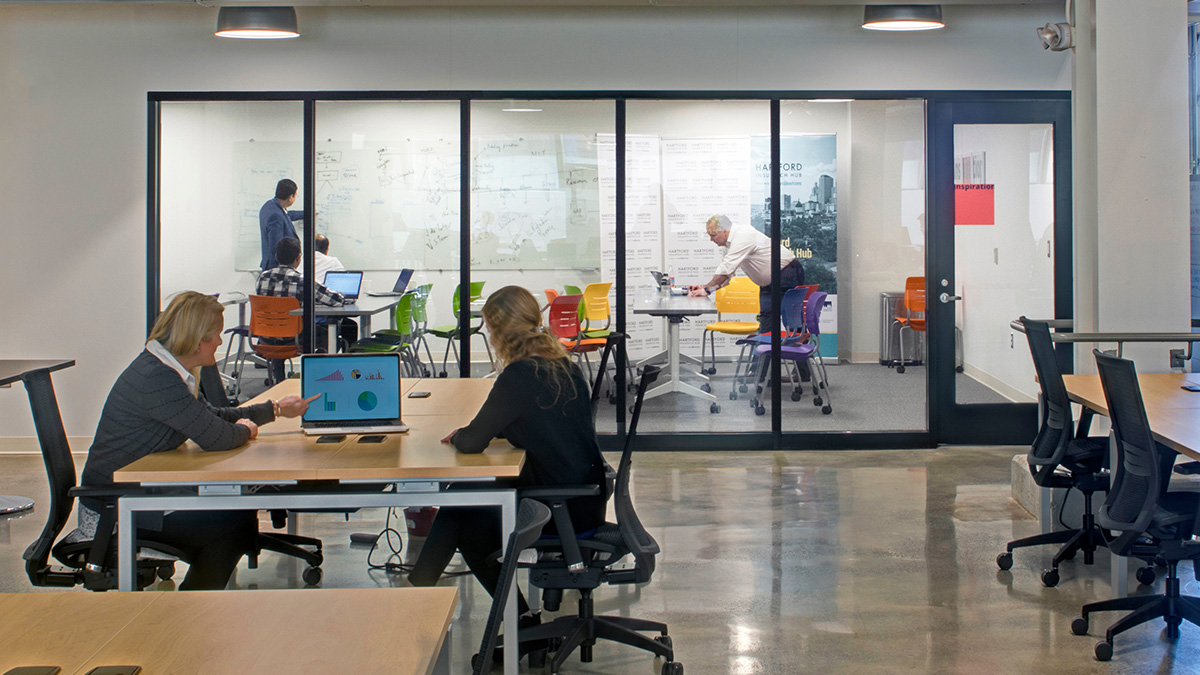- What's New
- Pricing & Purchasing
- Lead Times
- Literature & Samples
- Services & Warranties
- Careers
- Find a Rep
Outgrowing a One-Size-Fits-All Approach to Corporate Training

President John F. Kennedy, Dr. Seuss and Gandhi all had one critical thing in common: They were huge proponents of “lifelong learning.”
At KI, we categorically support continual education. We understand that school is the beginning, not the end, of our education. In the workplace, much of our knowledge is actually acquired on the job, whether through formal training or everyday interactions.
However, we’re witnessing an evolution in workplace training. No longer is one-size-fits-all appropriate for the needs of modern training environments. Through years of research with academic and field experts, we’ve identified three main training methodologies and the best space planning solutions to support them.
1. Make Formal Training More Flexible
When people think of corporate training, they may envision a large room with rows of tables and a speaker at the front leading trainees through a PowerPoint or jotting notes on a whiteboard. This traditional “corporate university” approach works especially well for formal, structured lessons on things like company policies or new technology.
To make this approach more flexible, this training paradigm can be designed to support instruction for dozens of people at the same time but also allows for one-on-one interactions.
By using multipurpose chairs and tables, you can allow employees to comfortably and efficiently take notes during a training session. Mobile lecterns give instructors the freedom to move around the room and offer individual help to trainees.
2. Connect Cooperative Training Paradigms
Informal or cooperative training methods can put employees at ease and encourage them to ask questions. They work particularly well in peer-led training sessions and those that require engagement and movement.
Cooperative training requires a flexible space with movable furniture. Large tables on casters or slides can make breakout sessions for large or small groups easy to set up. Mobile screens with dry erase surfaces can offer employees a place to jot down ideas or work through problems during a collaborative lesson.
For a more informal group training session, curved lounge furniture can provide a comfortable, casual setting for conversation.
3. Go the Distance with Remote Training
Employers have been using technology to facilitate remote training sessions for years. The pandemic accelerated that move online.
Remote training sessions will only grow more popular in the years to come. The technology that fuels those sessions is getting better and better. It can now make remote learners feel as if they’re in the room conversing with instructors or faraway colleagues.
With our Backbone Media Platform, for example, employees can gather around a powered and wired table and watch a lesson from a remote expert on the flat screen at the head. Tables like these are well-suited for hybrid learning. Employees can interact with distant instructors via technology and collaborate on problem sets with their peers around the table in person.
Lifelong Learning
Different training paradigms require different approaches to interior design including specific furniture solutions.
Our diverse product portfolio is full of dynamic solutions that can meet the needs of each of these training methods. Mix and match Connection Zone Mobile Screens, Pirouette Tables, Doni Task Chairs, MyPlace Lounge Furniture and much more to create your ideal corporate training environment.
Which training paradigms are most popular in your workplace?
Subscribe
Stay up to date with the latest trends and more.



